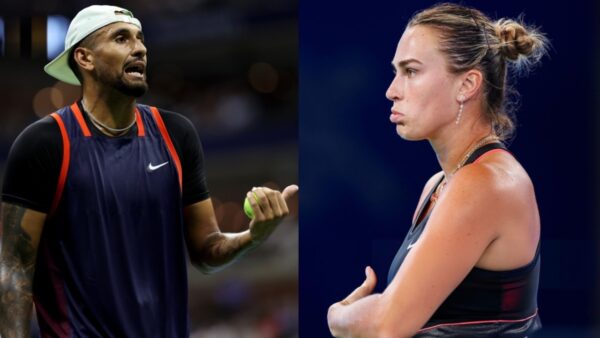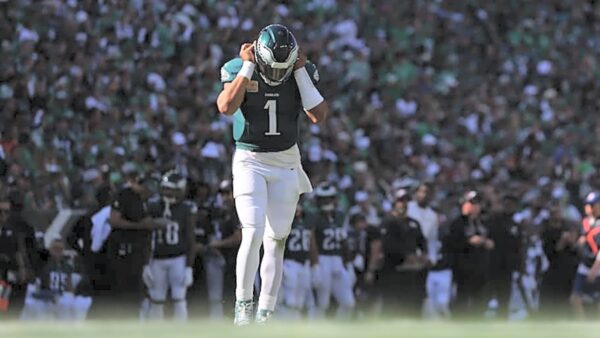Which F1 race had the most DNFs?
F1 has had its share of wild races, with incredible amounts of retirements, and the wildest of all had 19 DNFs.
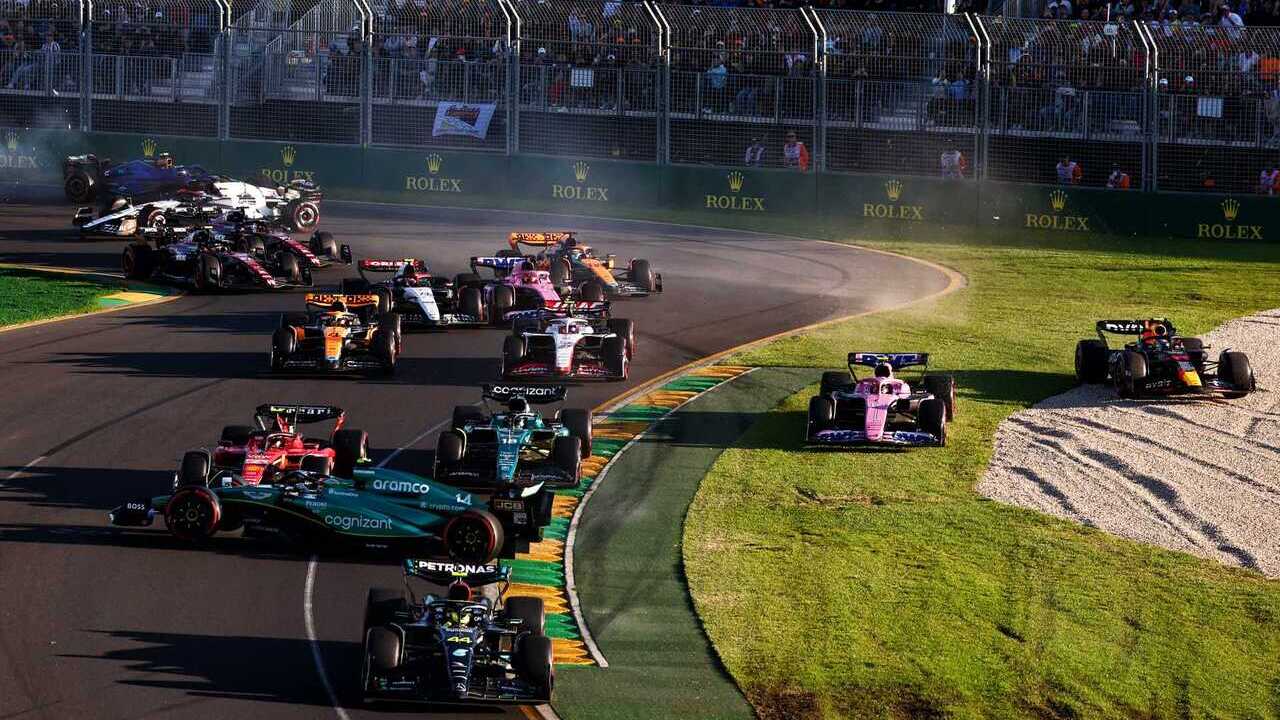
2023 F1 Australian GP (Via Racefans.com)
🔍 Explore this post with:
Formula 1 has had its share of baffling, chaotic races. The 2021 Hungarian Grand Prix and the 2023 Australian Grand Prix come to mind stands out in the most recent history. Out of the 20 that had started the Hungarian GP, only 14 finished it.
Most was taken out by a series of collisions (started by Valtteri Bottas and Lance Stroll) at the start of the race, Sergio Perez, Lando Norris, and Charles Leclerc being among those drivers. But in the pantheon of such races, it won’t rank very high.
A similar situation happened in the 2025 F1 season opener, the Australian GP. The race that witnessed an early race incident and rain causing chaos, saw just 14 drivers finishing the event, while 6 drivers DNFed. But these weren’t the races with the most DNFs.
2023 F1 Australian GP – 8 DNFs
This is the most recent one on our list of wild races. Things got started fairly swimmingly, with George Russell snatching the lead from Max Verstappen at the start. But on turn 3, the carnage started. The first man out of the race was Charles Leclerc, who spun off into the gravel after Lance Stroll touched his rear right. This was deemed a racing incident. A safety car came out. After the restart on lap 4, the craziness continued. On lap 6, Alex Albon made an unforced error while running P6.
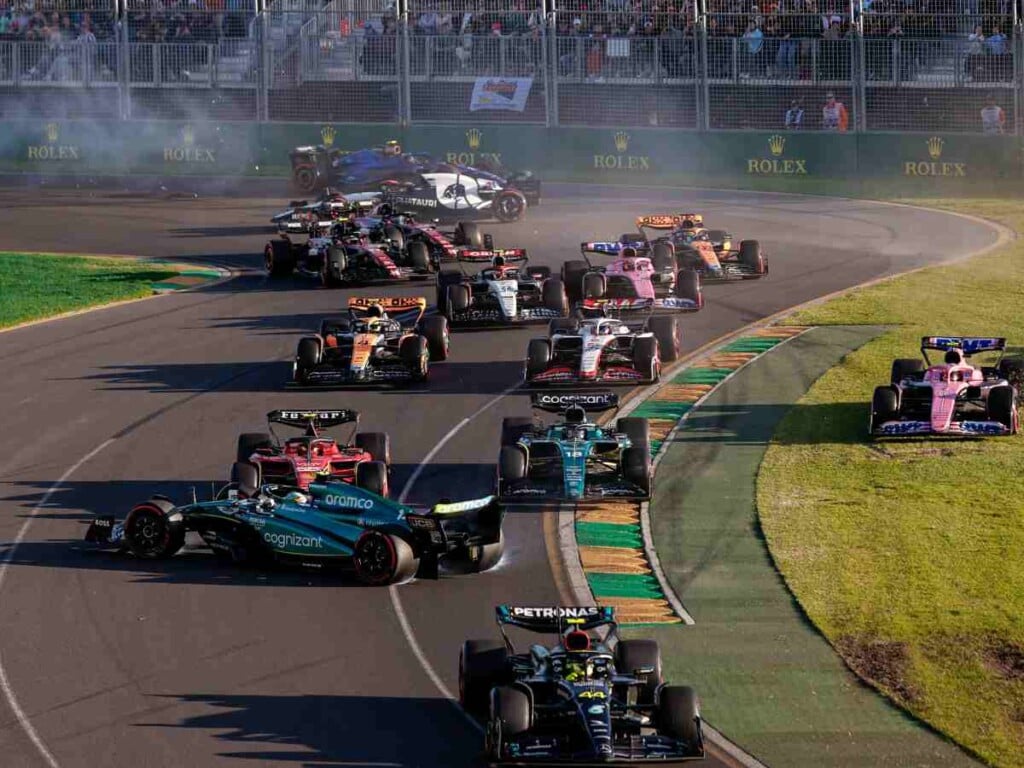
The Thai driver crashed heavily on turn 7, sending gravel onto the track as well as debris. The race was red flagged for this on lap 8, but Russell had pit under the safety car before this, which meant he lost the lead. The next restart was okay, but on lap 18, Russell retired from the race with a mechanical failure. This caused a brief VSC. It was mostly business as usual after this, until lap 53.
That lap, Kevin Magnussen made contact with the wall on turn 2, which detached his right-rear tire. He parked it fairly well, but the tire and other debris was on the track, so, the safety car came out. This turned into a red flag on lap 56. The decision was made to take a standing restart, but that soon turned into complete chaos. There were a series of collisions in turn 1.
Carlos Sainz spun around Fernando Alonso first. Behind them, Logan Sargeant took out Nyck de Vries and went into the gravel. While all this was going on, Pierre Gasly and Esteban Ocon also collided, with both retiring. The race was red flagged again, but it was restarted after a while. The restart order retained the order of the last racing lap (without the retirees), but Sainz was given a penalty for ‘causing a collision’. The race finished under the safety car, and Verstappen won it.
2014 F1 Canadian GP – 11 DNFs
Daniel Ricciardo‘s first win in Formula 1 was nothing if not chaotic. The race took place with track temperatures under 44 to 49 degrees Celsius. At the start, both Marussia drivers collided. Max Chilton lost control of his car on turn three and hit teammate Jules Bianchi, whose car went airborne. He went into a barrier, and both he and his teammate retired.
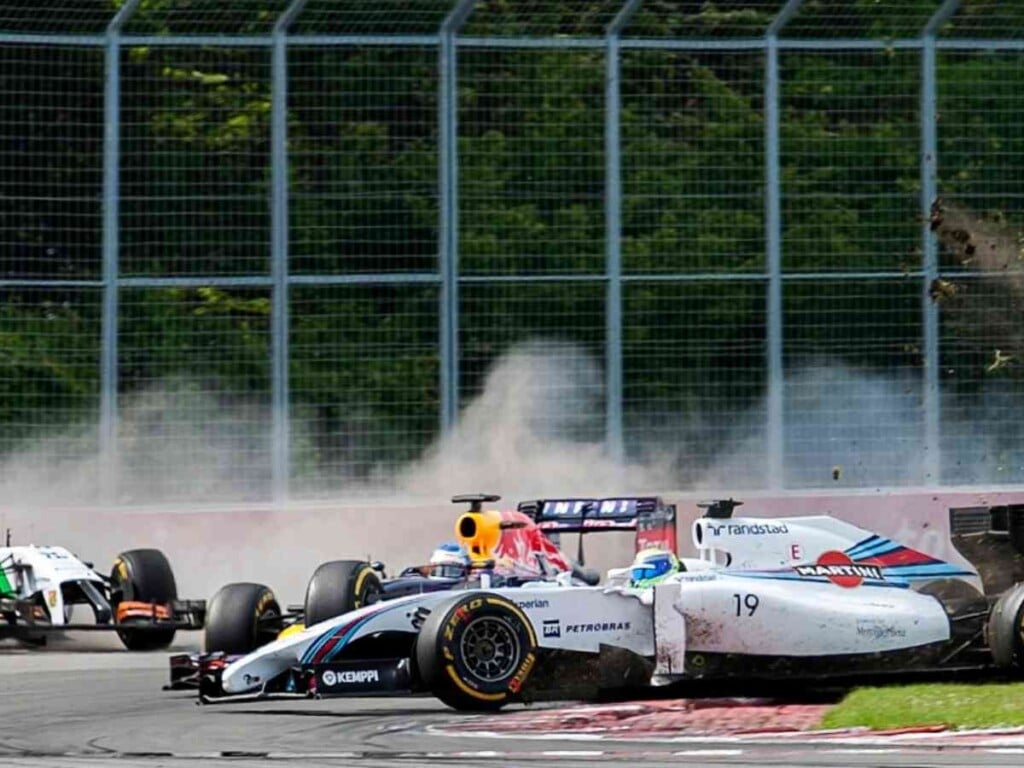
The next retirement was Marcus Ericsson, on lap 9, whose ‘turbocharger connector pipe’ failed. On lap 22, Pastor Maldonado retired after losing power. Kamui Kobayashi retired on lap 25, with a problem with his rear-left tire. After 47 laps were done, Lewis Hamilton, who had led the race for a long period, retired due to overheating brakes. 2 laps later, Daniil Kyvat retired with a drivetrain issue.
Lap 61, it was Romain Grosjean‘s turn to retire, as he had broken his rear wing. Esteban Gutierrez retired on lap 67 with an ERS system failure. On the final lap, Felipe Massa and Sergio Perez collided heavily, with the former suffering a 32G impact and the latter suffering a 27G impact. The race was neutralized and finish under the safety car, with Ricciardo winning out.
1998 F1 Belgian GP – 15 DNFs
The 1998 Belgian Grand Prix is definitely up there too. At the start of the race, in extremely wet conditions, McLaren’s David Coulthard lost control of his car, resulting in a mega collision and the race being red flagged. The race was then restarted (right from the start). Rubens Barrichello, who was injured, could not participate in the second start. Three additional drivers, Mika Salo, Ricardo Rosset, and Olivier Panis could not either, as their cars were destroyed, and the spare car was given to their teammate instead.

At the start of the race, Damon Hill took the lead. Mika Hakkinen, who was tussling with championship rival, Michael Schumacher, retired on the first corner after a collision with Johnny Herbert, who retired as well. Coulthard had another incident on this (second) first lap, colliding with Alex Wurz, who retired. The McLaren driver was able to continue on but fell to last place.
Coulthard continued to get himself into trouble. Michael Schumacher, who had taken the lead, was far, far up the road, and came up to Coulthard to lap him. But the Briton did not let him by immediately. A bit later, he slowed down and attempted to let the Ferrari driver through. But he did not move off the racing line, and because of the poor visibility, Schumacher slammed straight onto the back of him. Both drivers returned to the garage, and Schumacher got out of his car and made his way to the McLaren garage.
According to Coulthard, the then two-time world champion accused the Briton of “trying to f***ing kill me,” and threatened to kill him. Schumacher went to the stewards to protest, but it bore no fruit. Coulthard was able to rejoin the race, albeit with a new rear wing. In the end, Hill won the race, leading a 1-2 finish with teammate Ralf Schumacher. 10 drivers retired after the second restart, while four could not start due to the collision on the previous one.
1984 F1 Dallas GP – 17 DNFs
The 1984 Dallas Grand Prix is another one that comes to mind. It was held in July, and the Dallas heat in the height of summer was on full display. The build-up to the race was just as shocking as the race itself. The track’s condition was not the best, as a 50-lap Can-Am race the previous day badly damaged the already rough street surface. Repairs went on for 30 minutes until race time.
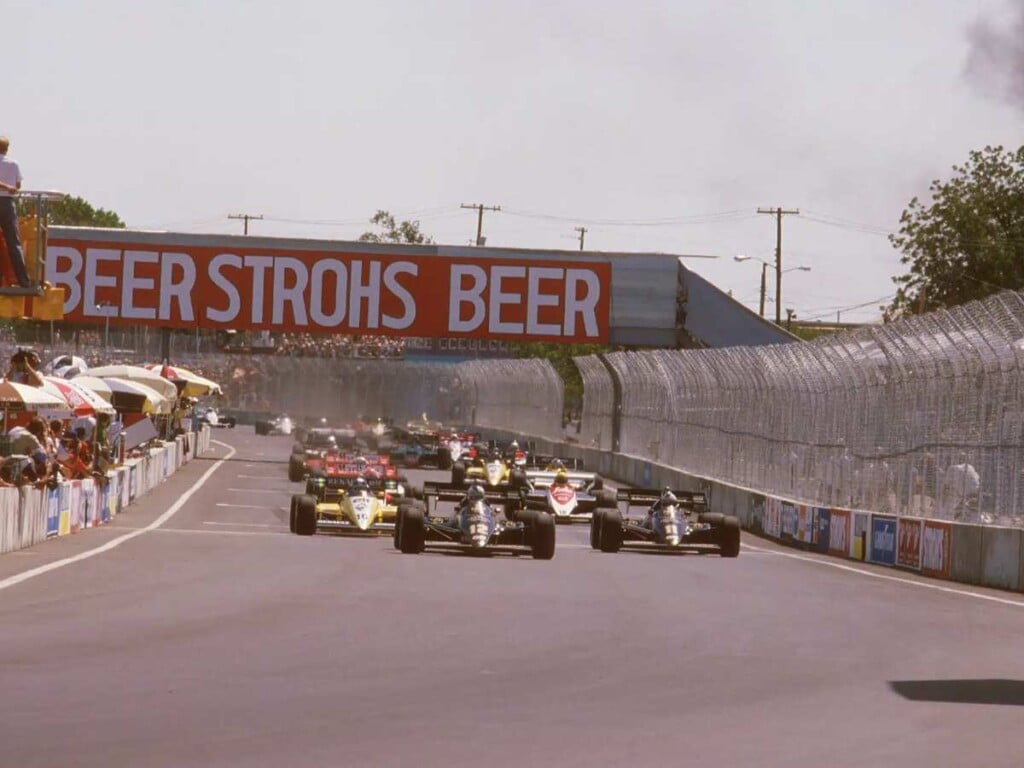
And then there was the heat, of course. The temperatures soared up to around 38 degrees Celsius, at least in Qualifying. That session also recorded a mind-blowing track temperature of 66 degrees Celsius! In fact, it was so hot that winner Keke Rosberg used a water-cooled skullcap inside of his helmet. During the race, Nigel Mansell, after his Lotus broke down, tried to push it across the finish line. He failed and passed out from exhaustion but was classified sixth (3 laps behind).
Piercarlo Ghinzani, who finished fifth ahead of Mansell, had cold water thrown on him during a pit stop to cope with the heat. Dutchman Huub Ruthengather went straight to the spectator area after retiring and snatched several cups of cold water so he could use them on his nether regions. In the race, out of 25 entrants, only 8 were classified as finishing it. But nothing touches the Monaco Grand Prix, which featured only 3 taking the chequered flag.
1996 F1 Monaco GP – 19 DNFs
Michael Schumacher was the driver that took pole position that weekend, ahead of his former championship rival, Damon Hill. There was heavy rain before the race, and the track was extremely wet when the start took place. Jos Verstappen, who had started the race on slick tires, spun on the first lap into the wall, which was the first of many retirements that race.
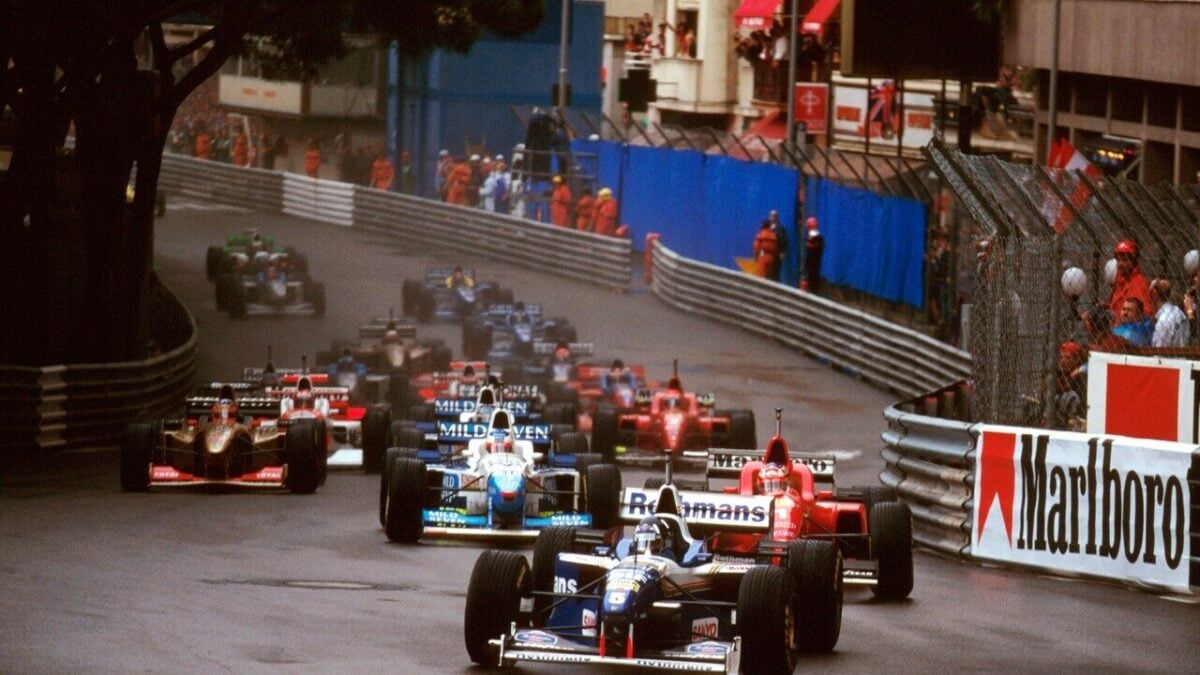
The Minardi duo of Giancarlo Fisichella and Pedro Lamy collided going into the first corner, which brought an end to their race. Going into Rascasse, Rubens Barrichello spun off and that was that. Michael Schumacher, who had started on the pole, lost control in lwer Mirabeau and hit the wall.
By lap 5, only 13 cars were remaining in the running. Many other retirements followed, and even the favorite to win, Damon Hill retired on lap 40 with an engine issue. Jean Alesi, who lead the race from that point, had a suspension failure, which handed the lead to Ligier’s Olivier Panis.
A few laps from the end, Mika Hakkinen, Mika Salo, and Eddie Irvine all retired after a freak collision between them. Eventually, only three drivers took the chequered flag: Olivier Panis, who won his first and only F1 race, David Coulthard, and Johnny Herbert. To this day, the race holds the record for the least number of cars running at the end of the race.

